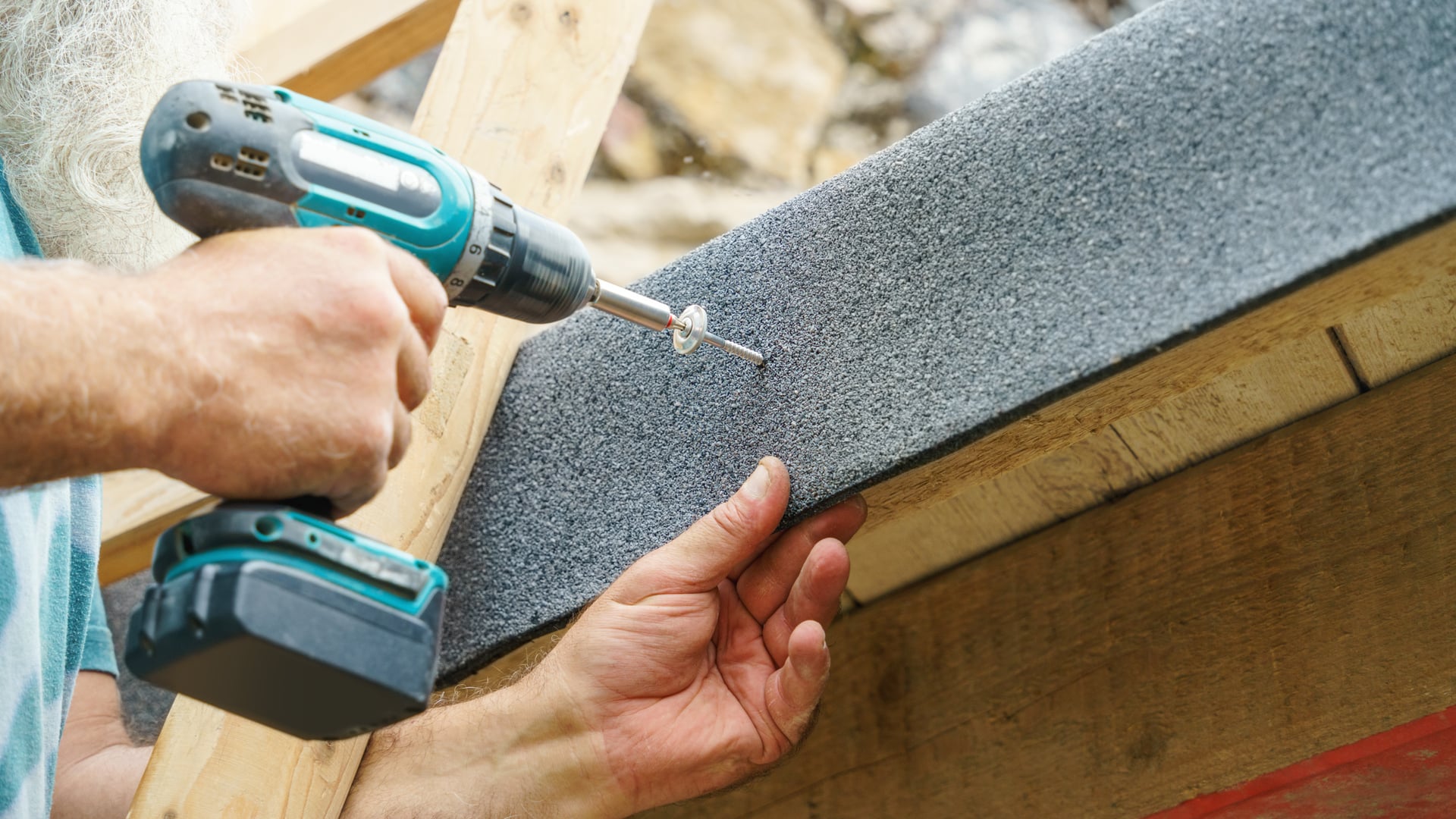11 Aug 2022
A Guide To Roof Felt
No matter which roof you install roof felt to, the purpose is always the same..to protect the entire roof from the outdoor weather elements.
When it comes to roof felt, there are a few things you should know about the application and maintenance of your existing roof covering.
Roof felt is a type of underlay that is placed between the roof floor and shingles, and provides an extra layer of protection against water damage and moisture.
There are two types of roof felt available; organic and inorganic.
Organic roof felt is made from natural materials such as wood fibre or jute and is usually cheaper than inorganic felt.
Inorganic roof felt is made from synthetic materials such as fibreglass or polyester and is more durable and expensive when compared to organic felt.

What Does It Do?
Many various purposes have been found for roofing felt but let’s take a look at just a couple of the main purposes:
- Roofing felt helps to protect a roof area from exposure to various weather elements such as wind, rain and snow, in circumstances where there are missing roof tiles.
- Roof felt covering, when correctly installed and maintained, acts as a permeable moisture barrier, allowing the warm, moist air that develops in the building to escape, whilst preventing any dampness outside coming into contact with any wooden beams and flooring.
Choosing The Right Roofing Felt
When choosing a new roofing felt, you should consider the climate where you live, as well as the type of roof you have or are looking to add to your building, whether it be commercial buildings, a shed or a residential property.
For example: If you live in an area with a lot of rainfall, it is important to select felt roofing sheets that can withstand high levels of moisture.
There are a few other things to consider before deciding which one is best for the task, such as:
- What thickness and size roofing sheets are needed?
- Will you require additional help to lay the roofing sheets?
- What guarantee or warranty comes with the roofing material?
- What roofing tools are required?
- What is the roofing felt made from?
- Do you require breathable or non-breathable?
- Do you have the correct felt adhesive for the roofing sheets?
Breathable Roofing Felt
Breathable roofing felt is a thin, lightweight material that allows water vapour to pass through it. The moisture naturally rises and ‘pushes’ through the membrane since breathable roof felt is a translucent, light material that allows water vapour to flow through it.
Water from outside that is leaking into the felt – such as a hole in the roof – isn’t usually able to flow through the barrier because it’s in a liquid form. Larger amounts of water may however get through, in severe circumstances, such as windy or stormy weather.
Thicker breathable roofing felt – often known as “gsm” or “grams per square inch” – has increased permeability and is advantageous, since the moist air will flow through it more easily, resulting in better circulation and less condensation.
Key Facts About Our Roofing Sheets
Our water-repellent and weather-resistant fabric is available in a range of weights to suit all types of roofs and is a great option to update existing roofs.
Our fabric is made from a high-quality, UV-stabilised polypropylene yarn, which is woven into a strong and durable felt, which makes them ideal for use as an underlay.
Our roofing supplies are also rot proof and will not degrade in sunlight.
Important Facts
- Water can cause damage to items in the loft as well as significant structural degradation, leaks and mould growth, if it gets beneath the roof tiles or slates.
Breathable roofing membrane helps to prevent this, by allowing the water to drain off the building, avoiding any damp or wet patches from forming and causing problems.
- When used in conjunction with other roofing materials, roofing felt can provide an extra level of protection against severe weather conditions and buildings that are located in areas that are vulnerable to ice and snow damage, as well as helping to reduce the build-up of condensation.
- It is important to ensure that you use the correct type of roofing felt for your project, as well as ensuring that it is laid correctly, as this will ensure the maximum level of protection for your roof.
Different Types Of Roofs
No matter which roof you install roof felt to, the purpose is always the same..to protect the entire roof from the outdoor weather elements.
Below are a couple of suggestions depending on which roof you have:
Pitched Roofs
If you have a pitched roof, you need a felt roof that is breathable so that any moisture that does get through the underlay, can evaporate.
Shed Roof
If you have a shed roof, you need a strong, durable and weatherproof felt that will withstand any movement from the shed and also provide good insulation.
Flat Roofs
You should install a non-breathable roofing felt on a flat roof, so that no moisture can get through and cause problems such as damp, which can lead to mould and rotting.
History
Non-breathable roofing membranes were formerly utilised to provide a temporary waterproof covering over a construction that would later be covered by a tiled or slate roof.
Building a roof might take days, but the waterproofing felt would protect the structure and any goods underneath it, as well as their contents, from inclement weather such as rain, sleet, snow and wind, by acting as a barrier against severe storms, while also preventing any other damage.
Once the roofing structure was complete, the non-breathable felt (below the tiles) would act as a dust barrier, but it would also trap warm, moist air, resulting in damp and condensation problems.
The Present
Although the traditional construction of roofs continued into the 1970s, breathable roofing felt (also known as breathable roofing membrane) has become a standard component of the building envelope and is now always used to provide a solid, waterproof roof that will last for years, while still allowing your roof to breathe and meet Building Regulations.
Summary
The goal of roof felt is always the same, whether you use it on a flat or sloped surface: to keep the entire roof safe from the elements outdoors.
Visit our online shop today to discover the various long lasting roofing materials we offer.
Contact Us
Whether you are looking for flat roofing supplies, felt underlay, shed felt and or roofing sheets, Tradestore Online has everything you need.
Contact our customer service team via email for help and support with small projects, or to understand the many benefits of each of our roofing materials. Email address: sales@tradestoreonline.co.uk


